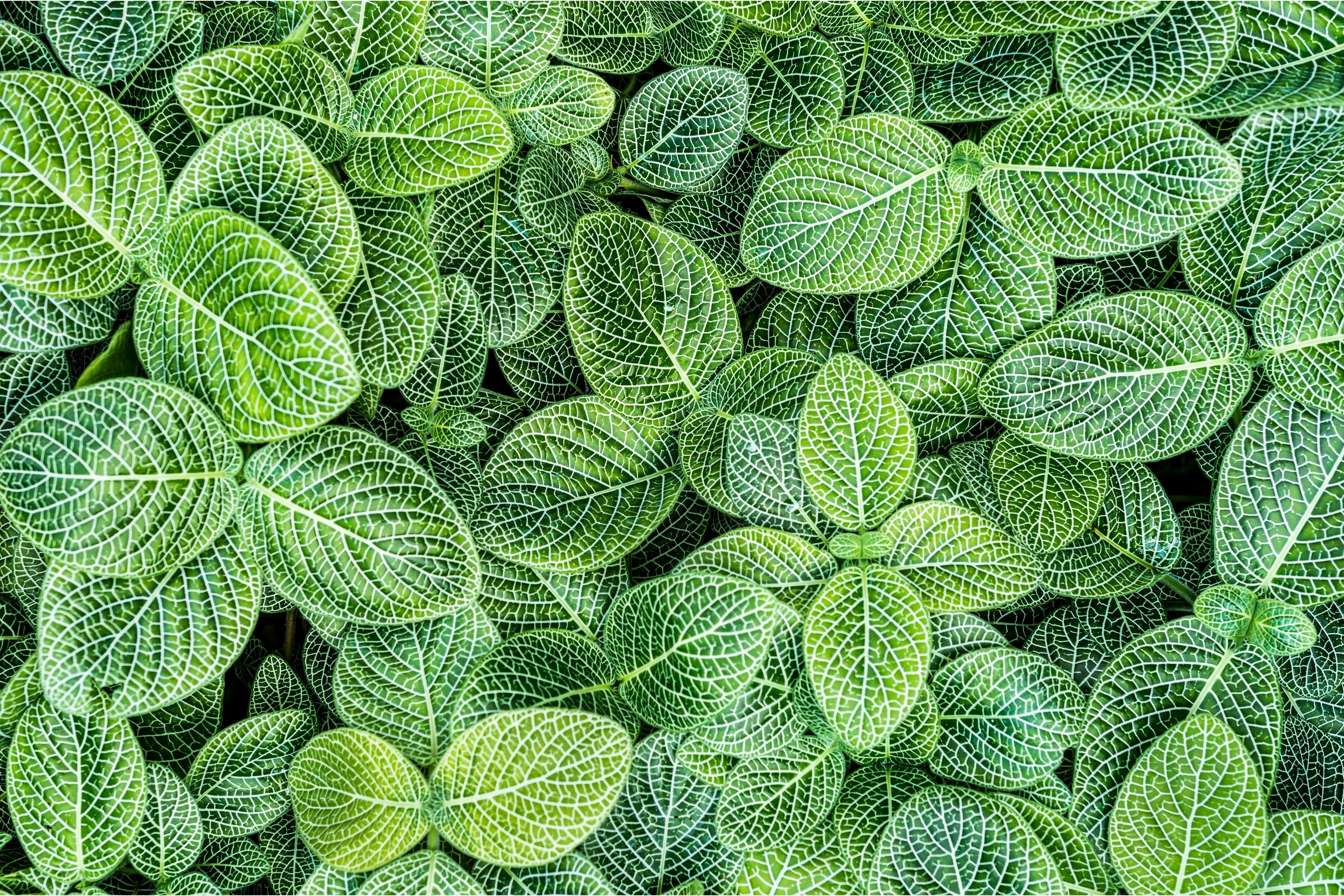Nerve plant
(Fittonia albivenis)

Description
Fittonia albivenis, commonly known as nerve plant, is a tropical perennial plant native to the rainforests of South America. It belongs to the Acanthaceae family and is widely cultivated as an ornamental plant due to its attractive foliage. The plant is also commonly known as mosaic plant or painted net-leaf due to the unique patterns and colors of its leaves. Description and Morphology: The Fittonia albivenis plant grows up to 12 inches tall and spreads up to 18 inches wide. The plant has small, oval-shaped leaves that are typically 2-3 inches long and 1-2 inches wide. The leaves have prominent veins that give the plant its distinctive appearance, and the veins can be pink, white, or red, depending on the cultivar. The leaves also have a glossy sheen, adding to their attractiveness. The plant produces small, white or pink flowers that bloom throughout the year, although they are not particularly showy. Cultivation and Care: The Fittonia albivenis plant is relatively easy to care for, making it a popular choice for indoor gardening. The plant requires a warm, humid environment and thrives in temperatures between 60 and 80 degrees Fahrenheit. It prefers bright, indirect sunlight and should be kept out of direct sunlight to avoid leaf burn. It is also important to keep the soil moist but not waterlogged, as the plant is susceptible to root rot. The plant can be propagated through stem cuttings, which should be taken in the spring or summer and planted in a well-draining soil mix. Uses: The Fittonia albivenis plant is primarily grown for its attractive foliage and is used as a houseplant or in terrariums. It is often used in decorative arrangements due to the striking colors and patterns of its leaves. The plant is also believed to have air-purifying properties and is considered a natural air freshener. In addition, some cultures believe that the plant has medicinal properties and use it to treat various ailments. Varieties: There are several cultivars of Fittonia albivenis, each with its unique characteristics. Some of the most popular cultivars include: Fittonia albivenis 'Argyroneura' - This cultivar has green leaves with silver-white veins and is one of the most common varieties. Fittonia albivenis 'Pink Vein' - This cultivar has green leaves with pink veins, making it a popular choice for those looking for a splash of color. Fittonia albivenis 'Red Vein' - This cultivar has green leaves with prominent red veins, adding a bold splash of color to any indoor space. Fittonia albivenis 'Frankie' - This cultivar has dark green leaves with light green veins and is known for its compact size and attractive foliage. Pests and Diseases: The Fittonia albivenis plant is relatively pest and disease-free, but it can be susceptible to mealybugs and spider mites. These pests can be treated with insecticidal soap or neem oil. Overwatering can also lead to root rot, which can be prevented by ensuring that the soil is well-drained and not waterlogged. In conclusion, Fittonia albivenis is an attractive and easy-to-care-for plant that is widely cultivated as an ornamental houseplant. With its unique patterns and colors, it adds a splash of color and interest to any indoor space. With proper care, it can thrive for many years, making it a great addition to any plant lover's collection.
Taxonomic tree:







